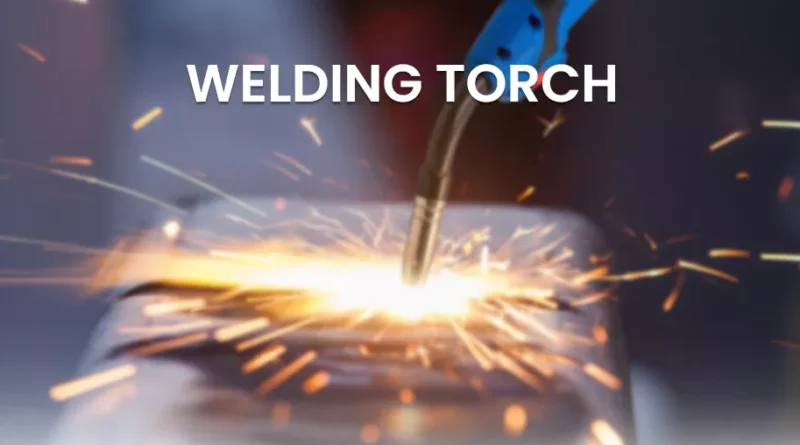Guide What is Welding?
This comprehensive guide delves into the basics of what is welding, its various techniques, applications, and the skills required to master this essential trade. Welding is a fundamental process in the manufacturing and construction industries, allowing for the joining of metals and thermoplastics. From towering skyscrapers to intricate machinery, welding is at the heart of creating durable and functional structures.
Understanding how it works:
Welding is the process of fusing two or more materials, typically metals or thermoplastics, by applying heat, pressure, or both. The result is a strong, permanent bond that can withstand significant stress and environmental factors.
The Basics
At its core, welding involves three primary components:
- Heat Source: This can be an electric arc, flame, laser, or electron beam.
- Filler Material: Often used to add material to the joint.
- Shielding Gas: Protects the weld area from atmospheric contamination.
Common Techniques
There are several welding techniques, each suited for different applications and materials. Here are some of the most common methods:
1. Arc Welding
Arc welding uses an electric arc to melt the workpieces and filler material. The most popular forms of arc welding include:
- Shielded Metal Arc (SMAW): Also known as stick welding, SMAW uses a consumable electrode coated in flux. It is widely used for its simplicity and effectiveness in various conditions.
- Gas Metal Arc (GMAW/MIG): Also known as Metal Inert Gas (MIG) welding, GMAW uses a continuous wire feed as an electrode and an inert gas to shield the weld.
- Gas Tungsten Arc (GTAW/TIG): Also known as Tungsten Inert Gas (TIG) welding, GTAW uses a non-consumable tungsten electrode and is known for producing high-quality, precise welds.
2. Gas Welding
Gas weld involves burning a fuel gas (commonly acetylene) with oxygen to produce a flame hot enough to melt metals. The most common type is:
- Oxy-Acetylene Weld: This method is versatile and used for cutting and brazing.
3. Resistance Welding
Resistance weld generates heat through electrical resistance. Common types include:
- Spot: Used for joining overlapping metal sheets.
- Seam: Creates a continuous weld along a seam.
4. Laser Weld process
Laser weld uses a concentrated laser beam to melt the materials. It is known for its precision and is used in high-tech industries like aerospace and automotive manufacturing.
Applications
Has a wide range of applications across various industries:
Construction
In construction process used to join structural components such as beams, columns, and trusses. It is essential for building bridges, skyscrapers, and residential buildings.
Automotive
The automotive industry relies heavily on weld process for assembling vehicle frames, exhaust systems, and other critical components. Techniques like MIG and spot weld process are commonly used.
Aerospace
In the aerospace sector, weld process ensures the integrity and safety of aircraft structures. Precision techniques like TIG and laser weld process are frequently employed.
Manufacturing
Manufacturing industries use process to produce machinery, equipment, and consumer goods. process are integral to the production lines of appliances, electronics, and heavy machinery.
Energy
Process is crucial in the energy sector for constructing pipelines, oil rigs, and renewable energy installations like wind turbines and solar panels.
Skills and Safety in Weld process
Essential Skills
To become a proficient welder, one must develop several key skills:
- Technical Knowledge: Understanding different weld techniques and their applications.
- Manual Dexterity: Steady hands and good hand-eye coordination are essential.
- Attention to Detail: Precision is crucial for producing high-quality welds.
- Problem-Solving: Ability to troubleshoot and resolve weld issues.
Safety Measures
Weld involves various hazards, including exposure to intense light, heat, and fumes. Adhering to safety protocols is vital to protect oneself and others:
- Personal Protective Equipment (PPE): Wear appropriate gear such as protective helmets, gloves, and protective clothing.
- Ventilation: Ensure proper ventilation to avoid inhaling harmful fumes.
- Training: Undergo comprehensive training to understand safety procedures and best practices.
Conclusion
Weld process is a versatile and indispensable process in numerous industries, from construction and automotive to aerospace and energy. Understanding the basics and different techniques, and the necessary skills can open up a world of opportunities for aspiring welders. Whether you’re looking to start a career in this industry or simply want to understand more about this critical trade, mastering the fundamentals is the first step toward success.
Buying a used VW. Buying used vauxhall, BMW, Jaguar, Ford, Volvo, Range rover, Bentley, Aston Martin, Porsche, Ferrari, Lamborghini, Maserati, Hyundai, Tesla, Honda, Pagani

